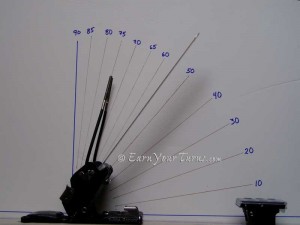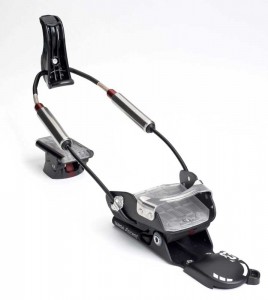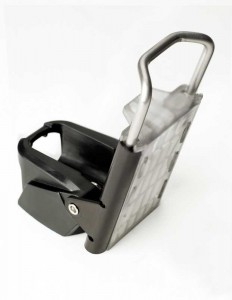Don’t have a free pivot yet?
Stop making excuses and get one.
G3’s Ascent seconded the importance of that back in 2005. Unfortunately when you compare it feature for feature six years later, it comes out the runt of the litter for the BC worthy tele pack.The Ascent does exactly what you’d expect a Targa to do with a lift kit under it. Unfortunately, that lift kit is rather prone to icing up. Compared to no free pivot it is not a deal killer. But compared to other real free heel bindings, it is annoying how often it ices up. In moist conditions, a lot. In dry conditions, sometimes.
Experienced users learn to simply make sure they toggle the mode switch once or twice with their heel raised. That usually breaks off the ice that builds up on the latch at the back of the toeplate. It isn’t really that hard of a maneuver to make, but some folks either can’t figure it out, or won’t even try. In some cases it doesn’t matter, you have to exit from the binding and chip the ice off with some sort of tool anyway. Arrrgh.
That’s another weakness with the Ascent. The mode switch can be difficult to flip. You need to smack the top of a pole with just the right english to get it to pop over. The switch for 7tm could be argued as equally difficult, but it really isn’t. It flips easy, you just have to bend over to do it. With the Ascent it’s really not that difficult to learn, but it requires more dexterity, power, and luck than other tour switches.

55 degrees ain't shabby. Plenty of room to stretch out your stride, or snap a fast jack-knife switchback off.
The best thing about the Ascent, aside from range of motion is how well it edges for a smooth engaging binding. That is the result of two elements: the progressive springs and the stack height of the binding. With the Ascent you stand a full 40mm above the deck. From that sort of perch you can develop some pretty solid leverage. Though the Ascent engages like a classic side-route cable binding, what is often termed less active, soft, or slow. I prefer the term smoothly because it really does enhance the velvety feel of a tele turn in powder or corn snow – even cruddy mush if you’ve got the legs for it.
Ah yes, one more nice feature of the Ascent is it’s heel post. They adopted the concept of a spring loaded heel riser for climbing in stiletto mode. It snaps up nice and easy thanks to the elastomer spring. Early versions had a problem with it staying upright, collapsing without warning. Not cool. What is cool is how G3 overcame that issue with a very simple sheet of spring steel that the edge of the heel post snaps in to for a secure hold. Say bye bye to the collapsing post syndrome. Comes with an optional extender for girls who prefer high heels. 😉
Summary
Most of the stuff I noticed in the very first review are features that are regularly acknowledged today. So is the cure for de-icing the binding. Those who have figured this move out have very few complaints with the Ascent. If you’re in an intercontinental mountain range like the Rockies or Tetons, it’s worth getting a pair on a bargain just to escape the bonds of cable resistance for the skin track. After all, resistance is futile, but tele-resistänçe, well that’s another story.
© 2011
Link to: First review of Genuine Guide Gear’s Ascent, © Dec. 2005.



